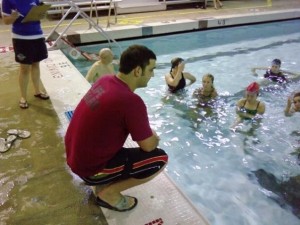Many, if not all, love summertime. The hot summer months are perfect for swimming, but before you head to the beach, river or local pool, it is recommended that you take a short moment to read about water safety.
The extensive research-based revisions on the national water safety programs and active education campaigns by various agencies across the country have yielded positive developments in drowning statistics. Water-related injuries and fatalities have notably decreased by up to 40% in toddlers and 80% in infants over the past years. But despite these improvements, there are still lots to be done to ensure zero casualty and injuries due to water activities.
With thousands of backyard and public swimming pools in Canada, drowning is still a real threat to young children (infants and toddlers). Most water-related fatalities involve swimming pools without self-latching and self-closing gates. If all swimming pools, public and private, meet the standards with regards to fencing and gates, all toddler pool injuries would have been prevented and toddler pool drownings could be cut by up to one-third.

Safety Tips You Need To Know
To prevent injuries and fatalities due to swimming and diving, the St Mark James recommends the following water safety tips.
Swimming:
- Never leave children unattended while swimming.
- Know your limitations. Never attempt to go beyond your capacity.
- Know the signs of hypothermia (low body temperature).
- Install fence on all four corners of backyard pools. Make sure fencing and gate locks meet the local standards.
- Learn about water safety and basic first aid by completing St Mark James training courses.
- Have emergency equipment on standby and a telephone near the swimming pool.
- Educate children about pool safety and post swimming pool rules.
Diving:
- Diving incidents are some of the most common causes of neck and back injuries that can lead to permanent paralysis.
- Drinking and diving increases the risk of diving accidents. Most common among young men.
- Most private or backyard pools are shallow and are NOT designed for diving.
- Do not dive into above ground pools.
- Always think of your safety before diving.
- Make sure the water is 10 feet deep. The depth of oceans and lakes may vary depending on the seasons or tides.
- Make sure the water is deep enough and that there are no rocks, land formations or debris along the entire path of your dive. The length of your dive depends on many factors that include the size of the diver, the force of dive and the origin or height of dive.
Knowing these tips and understanding them can help keep ensure the safety of your children and yourself. If you own a backyard pool, then much is required from you. Make sure your swimming pool is well protected and you know water safety. To learn more about swimming pool safety, it is recommended that you enroll in water safety training or first aid courses offered by St Mark James.
Related Video to Water Safety
http://www.youtube.com/watch?v=qi9G4O-JEJ4